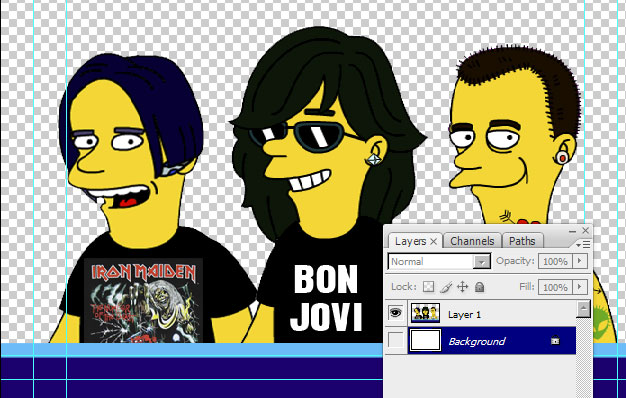
Paul Diamond Blow's Huggy Talk
Tips, tricks, and advice for graphic designers.
|
Photoshop File Formats: TIFF vs. PSD
When you should save your Photoshop image files as TIFFs, and when to save them as PSD files
by Paul Ace Diamond "Huggy" Blow
PSD (Photoshop Document) files
There are two reasons for saving high res image files as PSD files. The first is when you have a multi-layered Photoshop file that you want to save with all the layers intact in case you need to make changes or edits. The second reason to save as PSD is if there is anything "special" about the image file, such as if it contains spot color channels, is a duotone file, or if it consists of an image with a transparent background.
Sometimes when working on an image file in Photoshop you will need to add layers to the image file to create special effects or add text. You should save such files as PSD files. You can also save a Photoshop file with layers as a TIFF file, but the better option is to save as a PSD file, then when you are finished with the file FLATTEN the layers and "save as" a TIFF file. You then would use the flattened TIFF file in your page layout program while saving the PSD file in case you need to make any changes or edits. You can, of course, import the unflattened PSD file into page layout programs such as Indesign, but your work flow will be faster if you use the flattened TIFFs.
Also, if you add spot color channels into your image file or if the file is a duotone file you should save the file as a PSD file. You can import these into most page layout programs (such as Indesign). If your image has a transparent background layer (so that it will "float" over the background in your page layout program) you should also save the file as a PSD file. Most page layout programs such as Indesign handle such files better when saved as PSD files instead of as TIFFs.

A Word About JPEGs
Photoshop also gives you the option to save your high res image files as JPEGs or GIFs, but for printing purposes you should NEVER save your files as such, as the jpeg compression will result in a loss of image data and a loss of quality and most times will introduce jpeg "artifacts" into your images, which cannot be easily removed. You should only save your image files as jpegs or gifs if they are intended to be used on the web.
A Word About EPS files
In the "old days" one would create a "floating" Photoshop image by using a clipping path around an isolated image and save the file as a Photoshop EPS file. The isolated image would then "float" over the background in a page layout program. Nowadays, since page layout programs such as Indesign can import PSD files, the better way is to isolate the image and "float" it over a transparent background (as described above) and save the file as a PSD file. Also, in the "old days" one would save all duotone images as Photoshop EPS files, but the better way now is to save such files as PSD files, mainly because EPS images are much larger in file size and usually look like crap in page layout program previews (they especially look crappy in Indesign). There really is no reason to save a Photoshop image file as an EPS file nowadays.
A Word About PDF files
Photoshop also gives you the option of saving your image files as Phtoshop PDF files, but the only reason you should do this is if you actually want your Photoshop file to be a PDF that will open up in Adobe Acrobat (or other PDF readers) or if you want to add the image into an existing PDF file. Although you can import Photoshop PDF files into page layout programs, the better choice for printing is TIFF or PSD.